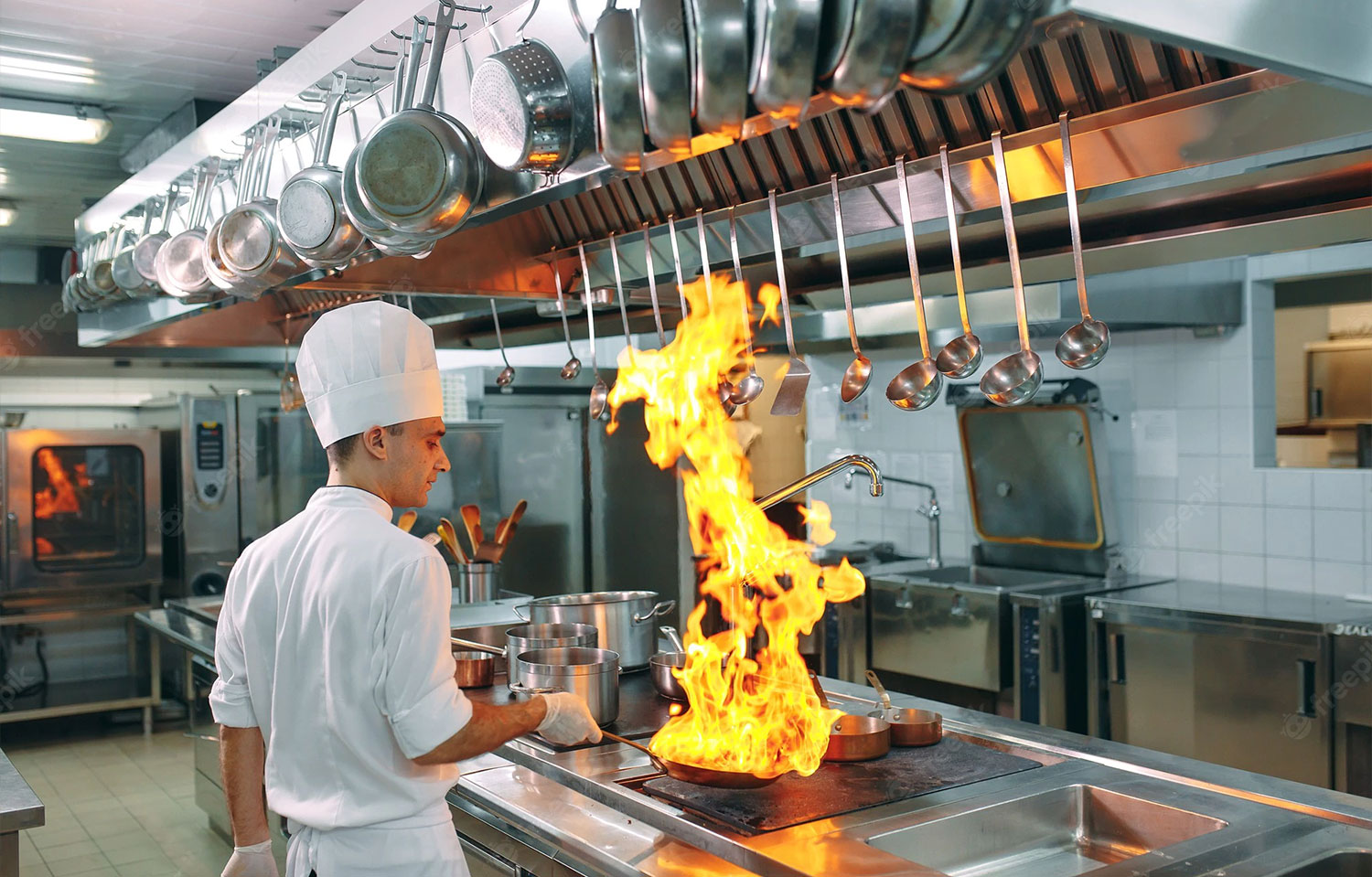
How to Choose Kitchen Ventilation Equipment?
Today, commercial and industrial kitchens are not only places for food preparation but also complex systems where many engineering criteria such as hygiene, energy efficiency, fire safety, and environmental management come together. Therefore, kitchen ventilation is not simply about selecting an exhaust fan. The right equipment choice ensures a comfortable working environment, prevents fire risks, optimizes energy consumption, and provides an environmentally responsible operational infrastructure.
-
Basic Objectives of Kitchen Ventilation
Any kitchen ventilation system has three main goals:
-
To remove heat, smoke, steam, and grease particles from the environment
-
To control odors
-
To ensure fire safety and optimize air quality
To achieve these goals, proper planning must be done, suitable equipment selected, and all systems must work harmoniously.
-
Types of Ventilation Equipment and Their Functions
a) Hoods
Hoods are the first line of defense in the kitchen; they capture steam, smoke, odors, and grease produced during cooking and direct them to the exhaust system. If not properly selected, the exhaust system becomes insufficient, and particles accumulated indoors pose both fire hazards and health risks to workers.
Selection Criteria:
-
Type of cooking equipment
-
Required airflow (m³/h)
-
Heat load discharged outdoors
-
Filter type
-
Compatibility with fire dampers and sprinkler systems
The TS EN 16282 standard defines the technical requirements regarding minimum airflow, discharge velocity, and filtration systems for commercial kitchen hoods.
b) Exhaust and Fresh Air Fans
Exhaust fans expel the air from the hood to the outside, while fresh air fans continuously supply clean air into the kitchen. If these systems are not balanced, negative pressure occurs, causing uncontrolled infiltration of outside air and discomfort.
Selection Criteria:
-
Total cooking load and kitchen size
-
Required air change rate
-
Noise level and energy efficiency
-
Protection against reverse airflow
c) Filtration Systems and Ecology Units
In kitchens with heavy cooking, especially in areas sensitive to smoke and odors, ecology units should be used for filtration.
Filtration Layers:
-
Pre-filter
-
Grease-catching metal filter
-
Electrostatic filter
-
Activated carbon filter
-
Ozone filter
-
UV filter
The choice of these systems depends not only on the amount of smoke but also on the cooking type.
d) Ducting and Fire Safety Systems
Grease accumulated in ventilation ducts is a potential fire hazard. Therefore:
-
The inner surface of ducts should be cleanable
-
Fire dampers compliant with TS EN 1366-1 must be used
-
Air ducts should be designed with appropriate diameter and insulation
-
Equipment Selection from an Energy Efficiency Perspective
Ventilation systems often account for 30% to 50% of a kitchen’s total energy consumption. Therefore, the selected equipment must be efficient, automation-supported, and sustainable.
Key Steps for Energy Efficiency:
-
Prefer fans with EC motors
-
Airflow should be modulated based on demand
-
Heat recovery systems should be implemented to reclaim energy from expelled air
-
Filter clogging levels should be monitored via automation, with timely replacements
-
Automation with sensors should reduce energy consumption of idle equipment
Every 1 Pa pressure loss in HVAC systems directly impacts annual operating costs. Hence, low-pressure loss and high-efficiency filters should be preferred.
-
Design and Engineering Approach
An effective ventilation system is not just a product but a comprehensive engineering project. Therefore:
-
Air conditioning load must be calculated
-
Air velocity, duct diameters, and airflow rates must be optimized with engineering software
-
Solutions must comply with acoustic, fire, and hygiene standards
-
Integration with advanced automation systems must be ensured
-
Compliance with Regulations
Key standards and regulations applicable in Turkey include:
-
TS EN 16282: Ventilation systems for commercial kitchens
-
Building Energy Performance Regulation (BEPY)
-
Workplace Opening and Operating Licenses Regulation
-
Fire Safety Regulation and TS CEN/TS 12101 series
Non-compliance with these standards can cause delays in licensing and serious penalties.
What Is Required for a Successful Kitchen Ventilation System?
🔹 Right equipment
🔹 Accurate engineering calculations
🔹 Energy-efficient design
🔹 Compliance with fire and hygiene regulations
🔹 Intelligent systems supported by automation
Kitchen ventilation is a critical infrastructure that directly impacts comfort, health, operating costs, food safety, and brand prestige. In this field, where HVAC, mechanical, and energy engineering disciplines intersect, correct equipment selection leads to a sustainable, safe, and long-lasting kitchen system.
İlker KURAN
Alperen Engineering Ltd. Co.







